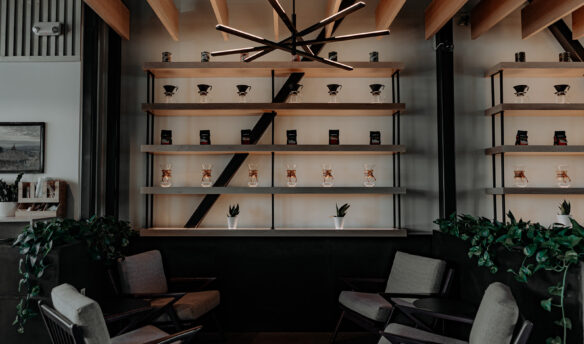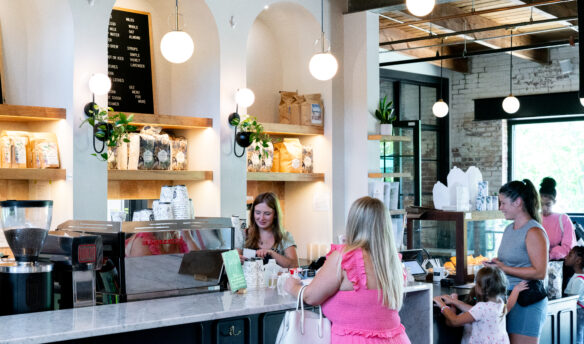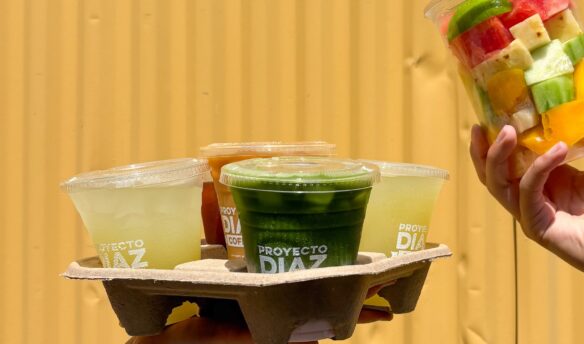[A]t Revolver, we’ve served coffee under a multi-roaster model since day one, and we’ve built a reputation on our robust selection and our ability to prepare and serve coffees at a high level.
Under this model, we’ve created relationships with many coffee companies. The multi-roaster model is not for every café, but bringing in guest roasters from time to time can add a new dimension to your café, providing your customers with new flavors while keeping their standbys ready.
1. Taste Everything
Choosing a guest roaster starts the same way every time: with samples. If we are serving a particular roaster at Revolver, they either sent samples to the shop without us asking—and we loved them—or we asked for samples—and we loved them.
You must always try a potential roaster’s coffee. Don’t just go by online descriptions or a tweet about how sweet and fruity a coffee is. At Revolver, we look for specific flavors and roast profiles—a roaster’s reputation or past coffees speaks little about their current offerings.
Our goal is to create a harmonious lineup while still highlighting the individuality of each coffee within the Revolver spectrum. Make a list of roasters you’d love to feature, and then kindly ask them for samples. If you’re looking to feature one guest roaster at a time, then choose the order you’d like to carry each roaster and work your way down the list.
When trying samples and giving feedback, it’s essential to be honest and transparent, whether good or bad. Don’t forget that just because you don’t like the current offerings of a particular roaster doesn’t mean you should write that roaster off completely.
2. Tackle Logistics Ahead of Time and Set Expectations
Once you’ve found a coffee you love, it’s time to figure out logistics. Like every roaster has a unique menu and style, each has its ordering procedures.
Before you decide to work with a new roaster, seek out information like minimums, volume discounts, order deadlines and protocols, and shipping dates and costs. Once you’ve obtained this information, you can responsibly decide if things are a go.
A guest roaster should be treated like a guest in your home: someone you give respect to but ultimately has an agreed-upon departure date. What has worked very well for us is to set up start and finish dates before the first order has even been placed.
For the roaster, this helps with stock and inventory matters; for you, this gives you space to organize and schedule your next guest roaster in a timely manner. Above all, it takes away any opportunity to surprise one another with an awkward or perceivably hurtful breakup. And if, at the time of the finish date, you decide you want to continue ordering from the roaster, then guess what? Just extend it. But make sure to pick another finish date to continue in complete transparency.
3. Prepare For Launch
Now that your first order is imminent, it’s time to get everyone ready. If you’re a roaster, you’ll want to ensure you have all the necessary account information and credit forms from your new client. For the shop, you’ll want to brief the team on the company and coffees they will serve and represent.
You’ll also want to input prices into the register and print price tags. There is a lot to do, and the last thing you want is for a customer not to buy a bag of your guest’s coffee because it lacks a price tag or a staff member doesn’t know anything about it.
And finally, about a week or so before the first shipment arrives, tell customers about it with a press release or even a simple tweet or Instagram post.
Everyone wants to serve great coffee. There is a tremendous amount of trust when a roaster bags up their coffee and ships it to your shop, and it’s your job to honor that trust by ensuring you are doing your very best to showcase every coffee every time. The ability to do this will make it easy to attract new roasting partners to work with you, and over time, finding new great partners will become easier and more manageable.
Follow the above steps as a guide to start. As you mold and shape these guidelines to fit your pace and style in your shop, you’ll soon find that your biggest problem is finding time to taste all the samples being sent your way!
—George Glannakos is an owner of Revolver Coffee in Vancouver.
This story was originally published on March 20, 2015 and and has been updated and republished according to our current Fresh Cup standards.
















